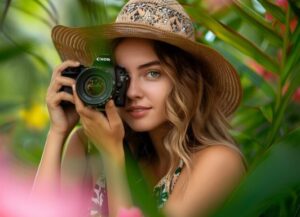Choosing the right spot for an outdoor photoshoot is essential to producing visually stunning and captivating images. In addition to enhancing the subject, the appropriate backdrop establishes the tone and atmosphere of the pictures. Choosing the ideal setting for your picture shoot can have a big impact on its outcome, whether you’re a professional or an eager amateur photographer. This book offers crucial advice and things to think about when choosing a spot that enhances your vision and lets you take advantage of all the opportunities for outdoor photography.
Define Your Vision and Objectives
Clearly establish your shoot’s vision and objectives before you start location hunting. Think about the look and feel you want to achieve, whether it’s a calm metropolitan environment, a cosy nature location, or something in between. Ascertain the essential components of the site that you require, including accessibility, backdrop aesthetics, and lighting. Having a clear vision will enable you to narrow down your search and make sure the site you select supports your artistic objectives.
Research and Scout Locations For an Outdoor Photoshoot
Investigate possible locations in your neighbourhood before you begin your quest. To locate well-known locations and undiscovered treasures, make use of internet resources like social media, photographic forums, and local guides. Sites like Pinterest and Instagram can provide as inspiration by showcasing the various ways that different places have been used in past photo shoots. After you’ve compiled a list of possible locations, physically inspect each one to determine its suitability. Examine the lighting and general atmosphere of each place at various times of the day.

Consider Lighting and Weather Conditions
In outdoor photography, lighting is an essential component that varies depending on the area. Examine the location’s interaction with natural light at various times of the day. The “golden hour,” which occurs in the early morning and late afternoon, offers warm, soft light that is perfect for photography. Don’t forget to think about the weather and how it could impact your shot. Have backup plans and flexible schedules to manage unforeseen conditions in case of weather changes.
Assess Accessibility and Logistics
Make sure the place you select can accommodate your demands and is easily accessible. Take into account aspects like parking, transit, and any licenses or authorisation needed for the photo session. Consider how simple it is to set up your equipment and how comfortable it is for your subjects. Plan appropriately for any trekking or long distance trip required to guarantee a seamless and effective setup. Considering accessibility and logistics is crucial to minimising interruptions and optimising the effectiveness of your photo session.
Evaluate the Background and Composition
The composition of your photos is greatly influenced by the background of your subject. Select a spot where the striking background will accentuate your subject rather than detract from it. Seek for eye-catching hues, textures, and other components that go well with your theme. Think about the way the background will affect your subject and how it fits into the composition as a whole. Try a variety of viewpoints and angles to discover the most dynamic and aesthetically pleasing compositions.
Check for Permissions and Regulations
Certain outdoor spaces can need to follow certain rules or have special authorisation, particularly if they are privately held or in a protected region. To avoid any legal concerns, make sure you secure the required permissions or clearances prior to your shoot. To keep a good rapport with location owners and other stakeholders, abide by local laws and ordinances. Comprehending and complying with these prerequisites will aid in guaranteeing a seamless and trouble-free photo shoot.
Utilize Natural Elements and Features
To improve the overall look of your photo shoot, include natural components and features. Seek out unusual landscape elements that might give your photos intrigue and depth, such as distinct vegetation, water features, or rock formations. Utilise these organic components to provide depth and perspective to your subject or to frame it. Your photos might have a unique and alluring quality by embracing the natural beauty of your setting.
Be Flexible and Adaptable
Adaptability and flexibility are essential when operating in outside environments. Be ready to modify your plans in response to unanticipated difficulties or changing circumstances. Accept any impromptu possibilities and original ideas that may come up while filming. Being flexible enables you to take full advantage of your surroundings and produce distinctive and memorable shots that may not have been in your original plan.
Conclusion
The first step to taking excellent outdoor photos is choosing the correct spot. Finding a site that enhances your shot and fits with your creative aims can be achieved by defining your vision, researching and scouting places, taking lighting and weather conditions into consideration, and assessing accessibility and background. To guarantee a seamless and pleasurable encounter, pay attention to permits, safety, and the surrounding environment. With enough forethought and adaptability, you may locate the ideal setting to realise your outdoor photography ideas and produce breathtaking, memorable pictures.











